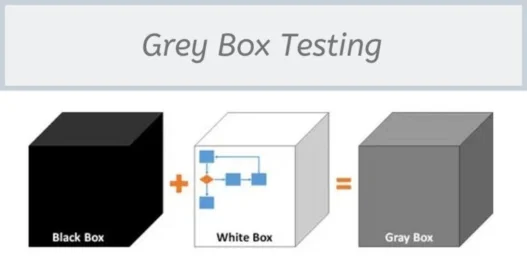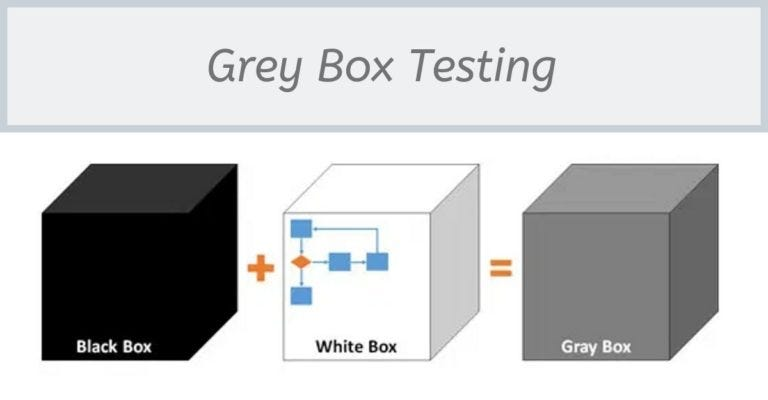If you’re preparing for a software development or engineering interview, understanding grey box testing is essential. This testing method is a critical skill for developers, and interviewers often ask questions about it to assess your technical expertise. In this article, we’ll define grey box testing, explain its importance, explore its techniques, and weigh its pros and cons to help you craft confident and informed answers during your interview.
What is Grey Box Testing?
Grey box testing is a software testing method that combines elements of white box testing and black box testing. It allows testers to evaluate software functionality, security, and quality with partial knowledge of the internal code and structure.
- White Box Testing: This method involves testing the internal code, infrastructure, and integrations of software. Testers have full access to the source code and use it to identify bugs or vulnerabilities.
- Black Box Testing: In this approach, testers evaluate the software’s functionality without any knowledge of its internal code. They focus on inputs and outputs to assess how the software responds to user interactions.
Grey box testing strikes a balance between the two, enabling testers to leverage partial knowledge of the system while also evaluating it from an external perspective.
Why is Grey Box Testing Important?
Grey box testing is a valuable skill for software developers and testers for several reasons:
- Combines the Best of Both Worlds: By integrating white box and black box testing, grey box testing provides a more comprehensive evaluation of the software.
- Tests Both Front-End and Back-End: It allows developers to assess both the user interface (front-end) and the underlying code (back-end) for a complete analysis.
- Identifies Vulnerabilities from a User Perspective: Testers can simulate real-world user interactions or potential attacks, uncovering issues that might not be visible through internal testing alone.
- Enhances Employability: Proficiency in grey box testing makes you a more versatile and desirable candidate for software development roles.
Techniques for Grey Box Testing
Grey box testing employs several techniques to ensure thorough and efficient testing. Here are the four primary methods:
1. Matrix Testing
Matrix testing involves identifying and defining all variables within the software that could impact functionality or cause errors. By understanding these variables, testers can anticipate potential issues, reduce testing time, and improve accuracy.
2. Regression Testing
Regression testing compares the current version of the software with previous iterations to identify any new bugs or functionality regressions caused by recent changes. This technique helps developers isolate and address issues quickly.
3. Pattern Testing
Pattern testing analyzes historical data from past software defects or errors. By understanding why these issues occurred, testers can prevent them from recurring in future iterations, improving the overall quality of the software.
4. Orthogonal Array Testing
This technique uses orthogonal arrays (tables with specific combinations of inputs) to create test cases. It maximizes test coverage while minimizing the number of test cases, saving time and resources.
Pros and Cons of Grey Box Testing
Like any testing method, grey box testing has its advantages and disadvantages. Here’s a breakdown:
Pros
- Saves Time: By combining multiple testing techniques, grey box testing provides comprehensive coverage in less time.
- Balances Internal and External Perspectives: Testers can evaluate the software from both a developer’s and a user’s perspective, leading to more accurate results.
- Prioritizes Testing Efforts: Developers can focus on high-risk areas or specific functionalities, making the testing process more efficient.
- Improves Security: Simulating user or attacker perspectives helps identify vulnerabilities that might otherwise go unnoticed.
Cons
- Limited Access to Source Code: Testers don’t have full access to the internal code, which can result in missed vulnerabilities.
- Potential Redundancy: If similar test cases have already been executed, grey box testing may lead to unnecessary repetition.
- Incomplete Coverage: Manually testing every possible program path is impractical, so some paths may remain untested.
When to Use Grey Box Testing
Grey box testing is particularly useful in the following scenarios:
- Integration Testing: When testing how different modules or components interact with each other.
- Security Testing: To identify vulnerabilities from both internal and external perspectives.
- User-Centric Testing: When evaluating how real users might interact with the software.
- Regression Testing: To ensure new changes haven’t introduced bugs or regressions.
Conclusion
Grey box testing is a powerful and versatile testing method that combines the strengths of white box and black box testing. It allows developers to evaluate software functionality, security, and quality from multiple perspectives, making it an essential skill for software testers and developers. By understanding its techniques, benefits, and limitations, you can confidently discuss grey box testing in interviews and demonstrate your expertise in software testing.
Call-to-Action:
Ready to master grey box testing and ace your next software development interview? Start by practicing these techniques on real-world projects, explore online tutorials, and familiarize yourself with testing tools. Your ability to effectively test and debug software will set you apart as a top candidate in the competitive tech industry!
















